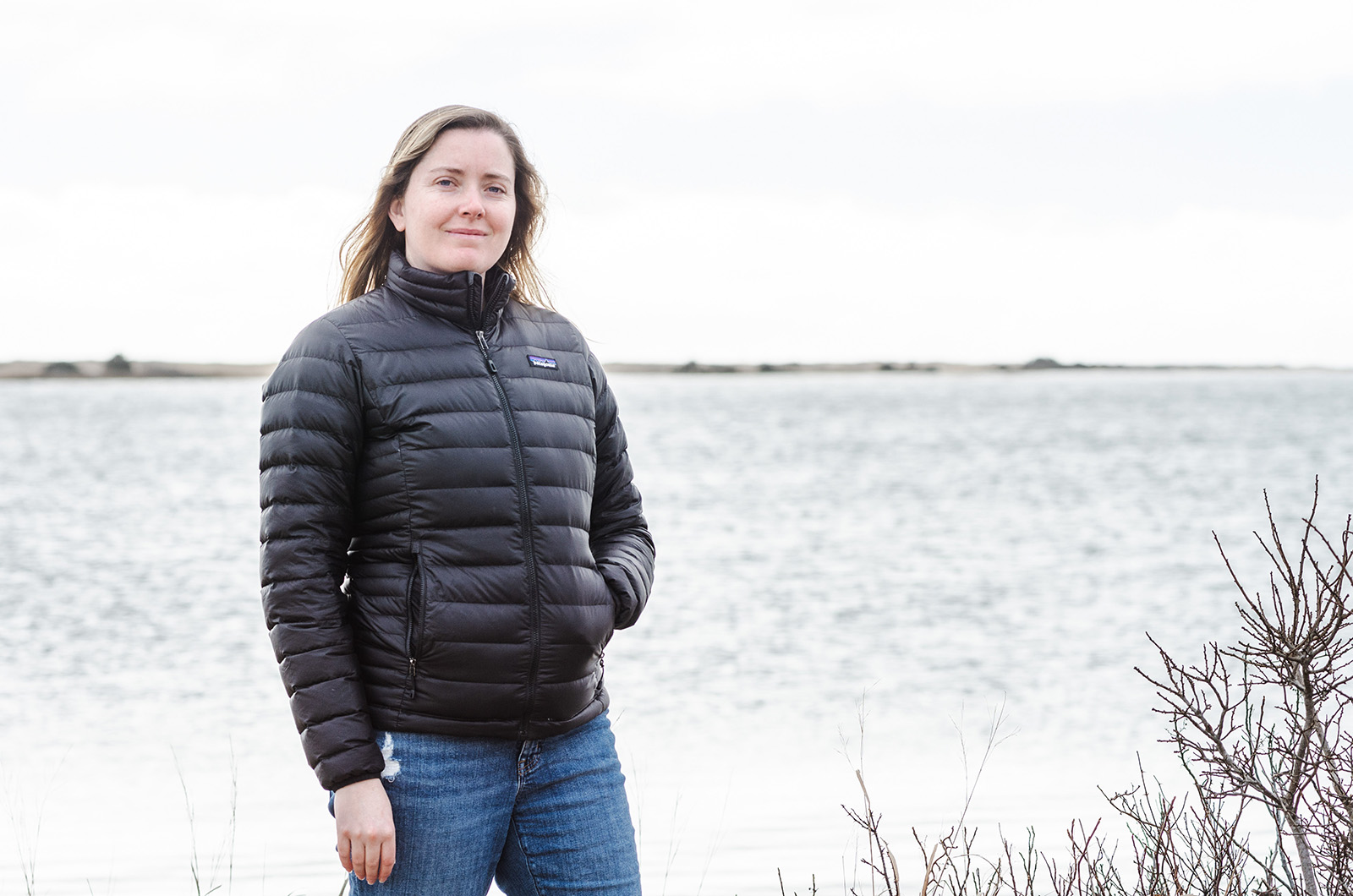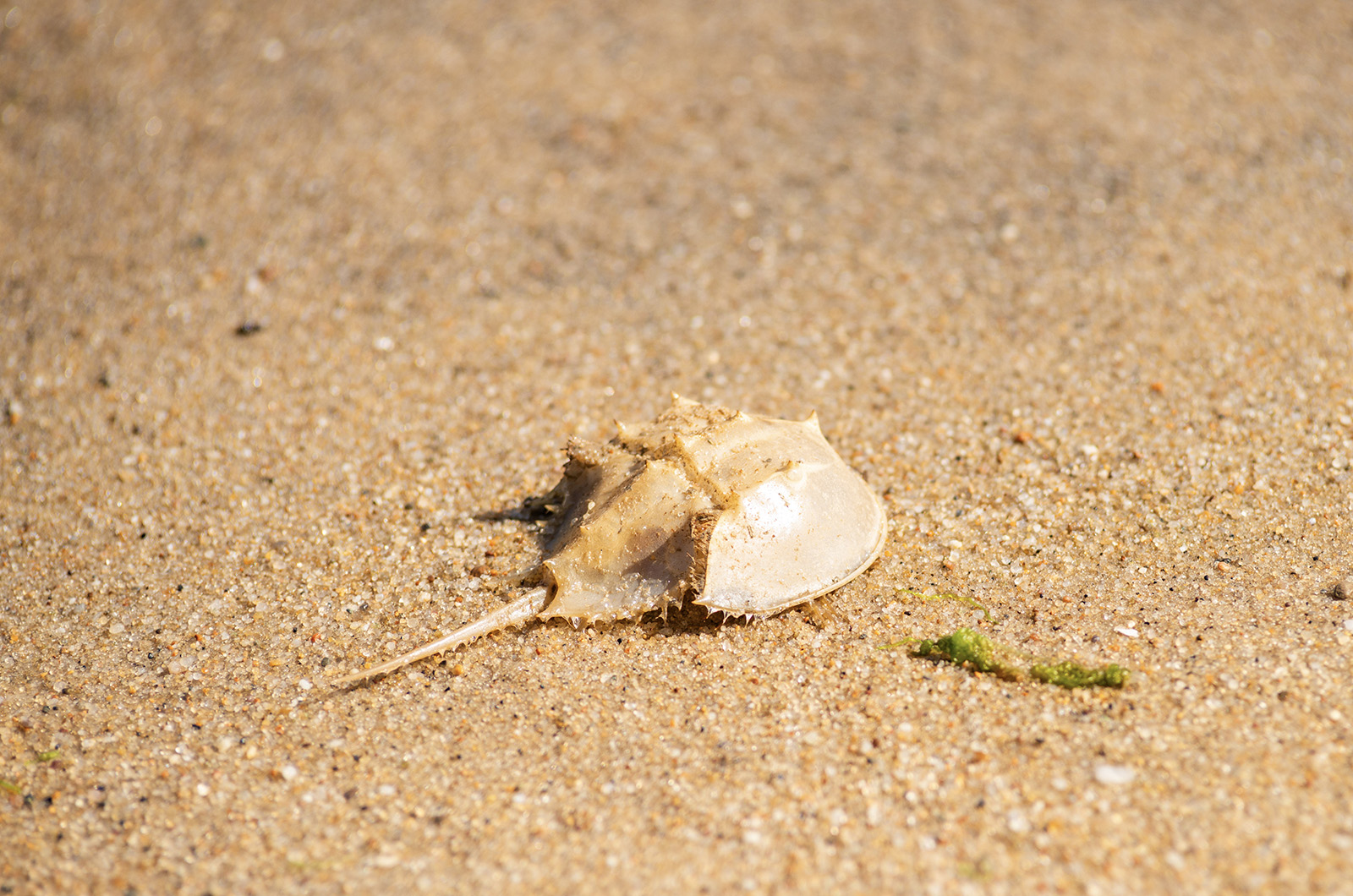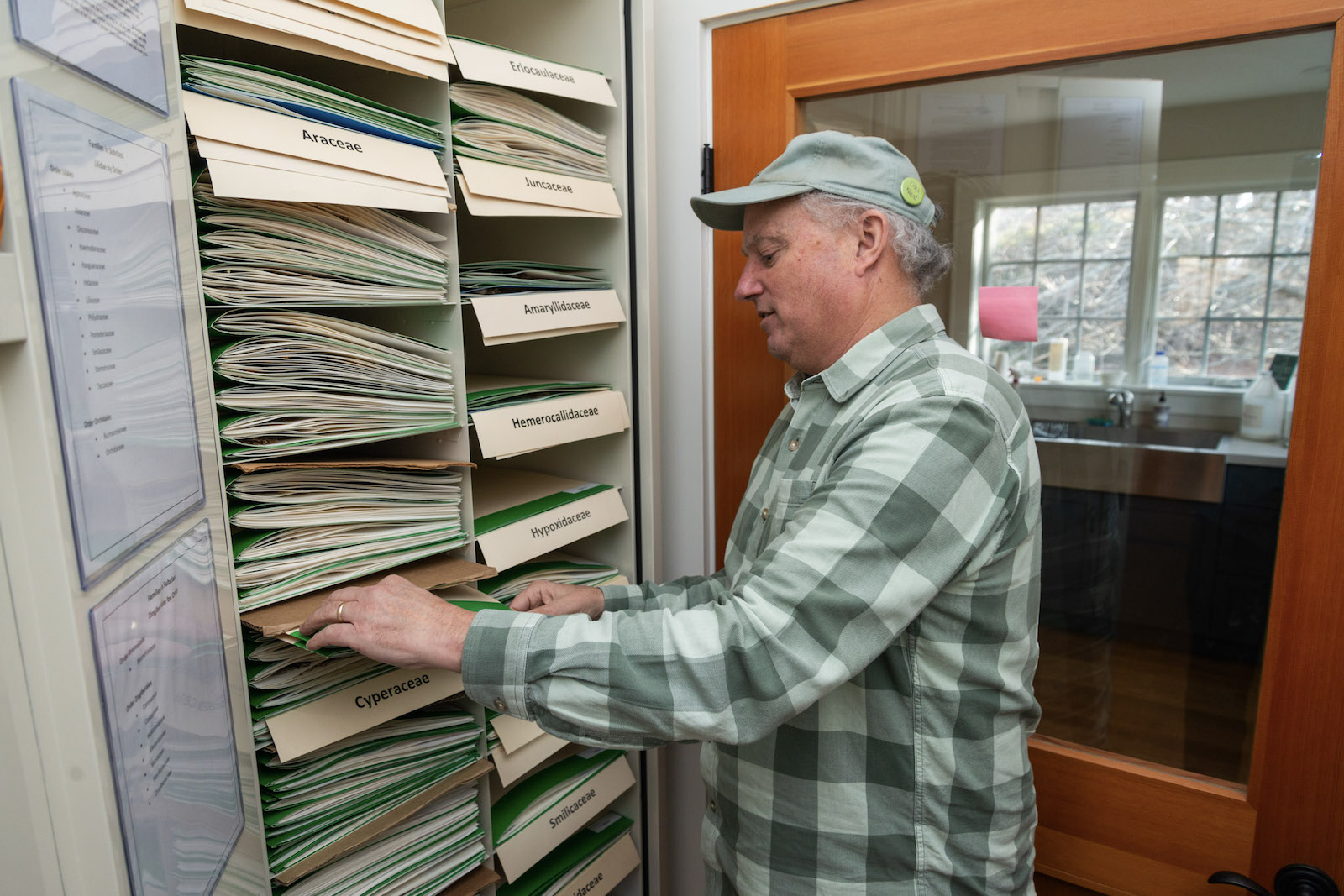While walking along Norton Point in early fall, Shea Fee can spot dozens of roseate terns wandering the beach, their strikingly orange legs and black heads distinguishing them from fellow shorebirds. She notes their numbers and returns often to continue documenting the species’ part-time residence on Chappaquiddick.
Last year, more than 7,000 terns — roughly 58 per cent of the continent’s total breeding population — visited the Vineyard and neighboring islands while migrating to South and Central America.
Roseate terns are listed under the Federal Endangered Species Act, legislation that, when signed into law by President Richard Nixon in December 1973, established the country’s first major protections for imperiled wildlife. It has allowed conservationists such as Ms. Fee, a coastal ecologist with The Trustees of Reservations, to guard at-risk plants and animals with the hopes of improving their population sizes and preserving biodiversity.
Now 50 years old, the Federal Endangered Species Act continues to play a key role in the survival of flora and fauna on-Island and across the nation. It has also inspired the creation of state conservation acts, including the Massachusetts Endangered Species Act in 1990.
In interviews with the Gazette, several conservationists reflected on the law’s triumphs and shortcomings, explained the process of listing species and considered the future of the Vineyard’s most threatened creatures.
“The Endangered Species Act is the foundational, fundamental piece of legislation that everybody, even those who aren’t involved in any way with this stuff, associates with United States conservation,” said Paul Goldstein, a seasonal Islander and lepidopterist who works for the U.S. Department of Agriculture. “It’s undeniably an important cornerstone, but at the same time it’s not something we can afford to rely on exclusively.”
Passing with near-unanimity in Congress, the Federal Endangered Species Act was designed to protect species with critically-low populations around the U.S. Species may be listed as endangered or threatened, depending on their rarity, and are assigned specific recovery plans that are re-evaluated every five years for efficacy.
The Massachusetts Endangered Species Act is similar, though it covers species declining only within the state’s boundaries. Both laws, said Mr. Goldstein, have made the resilience of several Island species possible.
In many ways, the Vineyard’s eastern beach tiger beetles, designated threatened under both acts, owe their lives to the legislation — and to retired MassWildlife ecologist Tim Simmons, who made an important discovery in 1989.
“I had been out looking for [the beetles] in historical sites on the Island for years and had pretty much given up,” said Mr. Simmons. “But then, because of a proposed development at Squibnocket Ridge, the Martha’s Vineyard Commission asked [me] to take a look for various weird plants and animals that might be there. I had been out on that beach numerous times… but we went out and there they were. It was the last place north of Virginia that these beetles seemed to exist.”
Mr. Simmons’ rediscovery of the Island’s tiger beetles was a game changer for the species, which, after being dealt a serious blow by oversand vehicle use in the 1970s and 1980s, was believed to be absent from all New England beaches. With financial support from the Federal Endangered Species Act and the Massachusetts Endangered Species Act, local conservationists have since been able to install barriers around occupied beetle habitat, warning beachgoers to keep their distance, and routinely analyzing the ebb and flow of the population size.
“Finding something that you were really convinced was extirpated is sensational,” said Mr. Simmons. “We’ve now been monitoring them a couple times a year for the last 30-plus years. They’ve gone through lots of peaks and valleys.”
Mr. Simmons said he would not be surprised if the beetle’s listing was soon changed to “endangered,” as their beach habitats are increasingly eroded by storms, sea levels rise and oversand vehicle use. Still, Mr. Simmons said, the mere fact that they continue to exist on the Island is a conservation success story.
At Polly Hill Arboretum in West Tisbury, rare plants abound both outdoors and in storage cabinets. Preserved in cool air and tight folders in the arboretum’s herbarium are some of Dukes County’s most endangered flora, studied often by botanists and used as a guide to protect more plants around the Island.
Endangered plant conservation is often stifled by a phenomenon called plant blindness, said Polly Hill executive director Tim Boland.
“It’s the lack of seeing the critical importance of plants to humanity,” said Mr. Boland. “[Endangered] animals have historically had more funding, but animals can’t survive without plants, right? They’re at the base of the food web… but by and large, plant species are relatively ignored, and that’s pretty sad.”
Endangered plants can also be difficult to identify, added Mr. Boland. The cleft-leaved hawthorn, endemic to the Vineyard and one of the rarest plants in the world, may not appear particularly different from other leafy green plants to the untrained eye. Should it sprout in tidy front yard, a homeowner might quickly uproot it.
But both state and federal protections continue to help Mr. Boland and his team teach the Island community about the importance of plant biodiversity and fund educational and research programs for future botanists.
“We have kids come through the herbarium to learn about the evolutionary history of plants, all the way from when they colonized the water and the land and altered the atmosphere,” said Mr. Boland. “This place was unlivable 200 million years ago, but plants changed it all through photosynthesis and by absorbing methane.... So it was the plants that came first. They are critical.”
But in some cases, such as the states dwindling horseshoe crab population, the limits of these classifications are laid bare. In spring 2023, the state’s Natural Heritage and Endangered Species program held a public hearing to consider the listing of horseshoe crabs, which are over-harvested for whelk bait and biomedical products. Despite pressure from environmental scientists and animal activists, the species failed to make it the list.
“This effort to get the species listed was unique and they put together a really strong proposal,” said Mark Faherty, science coordinator at Mass Audobon Cape Cod. “But you have to meet very specific criteria to be listed and our horseshoe crabs just couldn’t. They aren’t really going extinct. Rather, it’s their role in the ecosystem that is endangered.”
Horseshoe crab eggs serve as a primary food source for endangered shorebirds, including piping plovers and roseate terns. Many of the birds have evolved to time their southern autumn migration with horseshoe crab spawning season, which flows from New England down to Chesapeake Bay.
Mr. Faherty and other Mass Audubon researchers decided to go another route, attempting to defend horseshoe crabs by appealing directly to the state’s Marine Fisheries Advisory Commission, a nine-member body within the department of fish and game that manages the sustainability of recreational and commercial fishing. The commission, said Mr. Faherty, has a more direct influence over local fishing practices than the state Endangered Species program.
“The whelk fishery is centered around Martha’s Vineyard,” said Mr. Faherty. “It’s a fishery that was created out of convenience and abundance when people were stepping away from lobsters…. At some point someone discovered horseshoe crabs are good bait and now they’ve been heavily depleted. So we’re asking the commission to place restrictions on the industry.”
The commission denied Mass Audubon’s first pitch for horseshoe crab protections last year. They plan to make their case again this spring.
“It wasn’t unanimous last year and was sort of contentious,” said Mr. Faherty. “But we’ll be back again this year in a similar form, trying to pass protections for spawning horseshoe crabs as a first step to recovering the population and the ecological role that they play and other species depend on.”
Mr. Goldstein agreed that the endangered species acts are far from being a solution to all things conservation. Sometimes, he said, listing a species can even do more harm than good.
“The purpose of listing something is for it to eventually be de-listed,” said Mr. Goldstein. “But there’s a public perception that once something is on the list it’s fully protected… and then they stop fighting for it and it becomes stagnant.”
Hundreds of the Island’s moths and butterflies are considered imperiled, but it would be time-consuming and impractical to list every single species under the acts, Mr. Goldstein said.
Nevertheless, he added, 50 years later the Federal Endangered Species Act remains a historic and powerful force in U.S. conservation and should be looked to as a blueprint for future legislation, as climate change, diseases and urban development continue to decimate wildlife. But what is equally as important, he said, is the public’s own drive to protect the country’s non-human inhabitants.
“These laws are only as good as the will of the people on the ground,” said Mr. Goldstein. “We must embrace them and enforce them, and do right by them judiciously and sensibly.”








Comments
Comment policy »